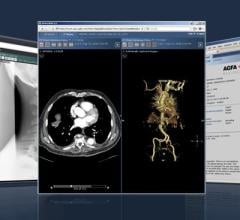
Greg Freiherr has reported on developments in radiology since 1983. He runs the consulting service, The Freiherr Group.
Seeing Technology For What It Is

Photo Courtesy of Pixabay
I miss the days when the difference between meaningful and meaningless was apparent; when the line separating relevant and irrelevant was easily drawn. I miss when truth mattered. When the old joke was just a joke: “How do you know when (the person, often a politician) is lying. His lips are moving.”
Today the joke is on us. All of us.
Conspiracy theories may have been around as long as anyone can remember — but today they have become mainstream. We Americans have come to believe in extremes. That goes for good as well as bad.
“Patient first” may be one of them. Noble? Yes. Inspiring? You bet. But, human nature being what it is, can it be achieved? Not, apparently, by Purdue Pharma.
If the maker of Oxycontin had practiced what it preached — commitment “to advancing the medical care of patients” — the opioid crisis might not have happened. But is this pharmaceutical vendor indicative of health care?
Giving Credit Where Credit Is Due
A few years ago I attended an industry banquet where the main speaker talked about how lucky we are to be in such an altruistic profession. He was right, of course. We don’t have the rip currents of the tobacco industry. Our jobs focus on technology that visualizes disease. What could be better than that? Exploratory surgery? Fuhgetaboutit.
But there is a dark side.
We like to think modern medicine invented old age. It didn’t. If it did, life expectancy in this country would be going up. It is not. The tale of Purdue Pharma is an example.
Believing that pills can remedy pain has contributed to drug overdose, one of two key drivers for this country’s recent decline in life expectancy, according to the Centers for Disease Control. (The other, according to the CDC, is a rise in suicides — another topic worthy of discussion but beyond the scope of this article.)
A century ago, an influenza pandemic killed 675,000 Americans, nose-diving average life expectancy of U.S. newborns to just 39 years. By 2013, life expectancy had risen 40 years. In 2017 it was at 78.6; down from 78.7 the year before. Life expectancy in this country is dropping.
Will believing that vaccinations do more harm than good lead to further declines? The ongoing measles epidemic could be a wakeup call. But will it be?
In a broader sense, will we — technology’s advocates — become realistic? Will we understand — and embrace — the concept that the influence of modern medical technology depends on people?
What Technology Can — and Cannot — Do
Imaging can help us see disease. But it alone is not the answer. The use of imaging machines is just one step in a long journey. The other steps involve myriad aspects of health care, some of which have been around for a long time. None has been sufficient in itself.
Decades before Roentgen promoted the use of X-rays to look inside the human body, hand washing and disinfectants dramatically changed the practice of surgery, even everyday life. Thanks to germ theory, people around the world came to recognize that germs cause infectious disease. Yet in 1918 the H1N1 influenza virus infected 500 million people — about a third of the world population — and caused about 50 million deaths.
Fear As A Driving Force
It was fear that drove the development of vaccines, fear of influenza, measles, hepatitis, diphtheria and polio, to name a few. But even the development of vaccines was not enough, as evidenced by the current measles outbreak. We’ve come to expect the good without effort.
We continue to worship at the altar of technology as if technology had some god-like power.
We need to recognize and embrace that technology only provides us with tools and that these tools must be used. How we use medical technology is as much a determinant of its effect on health as the technology itself. It stands to reason, therefore, that only through wisdom can people get the most from medical technology.
This is all the more important today as we start looking for answers in a new form of technology; one that some say might ultimately confer wisdom, even embody it. I am referring to artificial intelligence (aka machine learning). This is especially dangerous — not that the technology itself poses danger but rather our attitude toward it.
I am reminded of this by dialogue written hundreds of years ago, dialogue that has as much meaning today as it did then. “The fault, dear Brutus, is not in our stars, but in ourselves …”
Through the line he wrote for Cassius, Shakespeare was saying that people must take responsibility for their actions — or inactions — not simply say that the future is written in the stars. In Shakespeare’s time it was astrology. Today it is technology. The transitive property applies.
Seeing Technology For What It Is
I am not advocating that we throw out technology. Nor that it should be disused. On the contrary, technology should be used. But only for its purpose.
Technology provides tools. It is people who must decide how — and when — to use those tools. This applies regardless of whether the technology offers a look inside the human body or, as in the case of AI, insights drawn from data patterns.
Greg Freiherr is a contributing editor to Imaging Technology News (ITN). Over the past three decades, Freiherr has served as business and technology editor for publications in medical imaging, as well as consulted for vendors, professional organizations, academia, and financial institutions.


 May 16, 2024
May 16, 2024 








